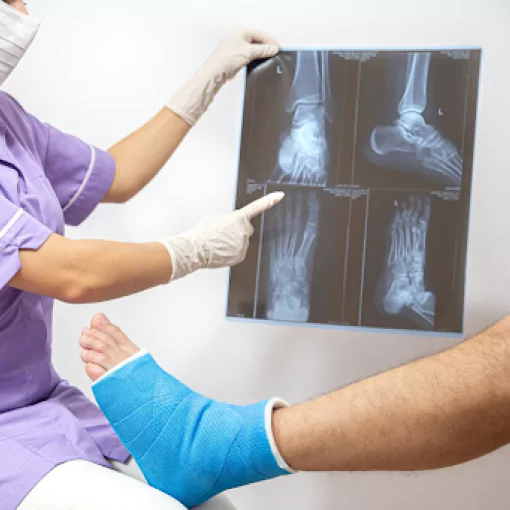- +91 62384 78716 +91 99475 78797
-
Sasthamangalam, Trivandrum
Sasthamangalam, Trivandrum
Globally, the incidence of fractures has increased dramatically in recent years. It is due to the fast-paced lifestyle, increased injuries and lack of exercise that leads to weak bones (Osteoporosis) and a longer life expectancy. Nearly everybody knows someone who has suffered from a bone fracture. Although fractures are a very common problem, there is not much information on how to properly treat them.
While fractures can’t be completely avoided, there are ways you can reduce your risk. A way to minimize your fracture risk is to build stronger bones, and keep them healthy.
If you are suffering from a fracture, it is important not to panic. Here are basic first aid guidelines:
If you suspect that a person has a fracture, follow these steps:
A physical examination of the patient is required to determine if fracture has occurred
A CT-scan, X-ray, or MRI might be recommended.
Bone fractures treatment can be broadly described as:
To regain muscle strength, physiotherapy is crucial. After surgery is performed, physio plays an important role in regaining function back with a range of movement exercises and strengthening and proprioception exercises.
Closed fractures tend to be more common than open ones (the skin above the injury is unharmed).
The most common fracture in children is the distal radius fracture. It usually occurs around the wrist in the radius, but does not affect the joint. Here are the most common type of fractures:
Make sure you are taking care of your nutrition, including your calcium and vitamins. Follow all instructions and rules of your doctor. Book an appointment with Dr Ganesh for more information.

Copyright © 2025 Dr. Ganesh Navaneedhan. All Rights Reserved. | Designed By Harvee healthcare